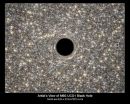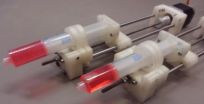(Press-News.org) Bioluminescence, nanoparticles, gene manipulation – these sound like the ideas of a science fiction writer, but, in fact, they are components of an exciting new approach to imaging local and metastatic tumors. In preclinical animal models of metastatic prostate cancer, scientists at Virginia Commonwealth University Massey Cancer Center, VCU Institute of Molecular Medicine and Johns Hopkins Medical Institutions have provided proof-of-principle of a new molecular imaging approach that could revolutionize doctors' ability to see tumors that have metastasized to other sites in the body, including the bones.
Recently published in the OnlineFirst edition of the journal Cancer Research, a journal of the American Association for Cancer Research, this multiple institution study is the first to develop in vivo (in animal models) a systemically administered, non-invasive, molecular-genetic technique to image bone metastases resulting from prostate cancer. The new method relies on the detection of a gene known as AEG-1, which was originally discovered by the study's co-lead investigator Paul B. Fisher, M.Ph., Ph.D., and has been shown to be expressed in the majority of cancers but not in normal, healthy cells. In preclinical studies, the researchers were able to image bone metastases with greater accuracy than any clinically approved imaging method.
"Currently, we do not have a sensitive and specific non-invasive technique to detect bone metastases, so we are very encouraged by the results of this study" says Fisher, Thelma Newmeyer Corman Endowed Chair in Cancer Research and co-leader of the Cancer Molecular Genetics research program at VCU Massey Cancer Center, chairman of the Department of Human and Molecular Genetics at the VCU School of Medicine and director of the VCU Institute of Molecular Medicine. "Additionally, because AEG-1 is expressed in the majority of cancers, this research could potentially lead to earlier detection and treatment of metastases originating from a variety of cancer types."
Imaging the expression of a gene in real time is not an easy task. To do it, the scientists used a promoter called AEG-Prom. A promoter is a set of chemical instructions coded in DNA that initiates activity in a gene. The team combined AEG-Prom with imaging agents consisting of a gene that produces firefly luciferase, the bioluminescent substance that makes fireflies glow, and a gene called HSV1tk, which initiates a chemical reaction when specific radioactive compounds are administered. The team then inserted the combination into tiny nanoparticles that are injected intravenously. When exposed to specific proteins that activate the AEG-Prom, including the c-MYC protein that is elevated in many cancer cells, the AEG-Prom initiates activity in the imaging agent, and the location of cancer cells expressing the imaging agent are made visible using sensitive imaging devices.
"The imaging agents and nanoparticle used in this study have already been tested in unrelated clinical trials. Moving this concept into the clinic to image metastasis in patients is the next logical step in the evolution of this research," says co-lead author Martin G. Pomper, M.D., Ph.D., William R. Brody Professor of Radiology at Johns Hopkins Medical Institutions. "My colleagues and I are working toward this goal, and we look forward to opening a study to deploy this technology as soon as possible."
Fisher and Pomper are pioneering the use of cancer-specific and cancer-selective gene promoters to image cancer. Previous studies in melanoma and breast cancer leveraged another gene originally discovered by Fisher called progression elevated gene-3 (PEG-3) using a promoter known as PEG-Prom. In addition to imaging, this approach could also be used to deliver therapeutic agents, such as targeted therapies, directly to local and distant tumors sites and allow physicians to monitor drug delivery in real time. Separate studies are currently under way to examine the therapeutic potential of this strategy.
INFORMATION:
Fisher and Pomper collaborated on this research with Siddik Sarkar, Ph.D., postdoctoral research scientist in the Department of Human and Molecular Genetics at the VCU School of Medicine, as well as Akrita Bhatnagar, Ph.D., Yuchuan Wang, Ph.D., Ronnie C. Mease, Ph.D., Matthew Gabrielson, M.D., Polina Sysa, M.D., lL Minn, Ph.D., Gilbert Green, Brian Simmons, Ph.D., and Kathleen Gabrielson, D.V.M., Ph.D., all from Johns Hopkins Medical Institutions.
This study was supported by National Cancer Institute grant CA151838, the Prostate Cancer Foundation, the Patrick C. Walsh Foundation, the National Foundation for Cancer Research and, in part, by VCU Massey Cancer Center's NIH-NCI Cancer Center Support Grant P30 CA016059.
The full manuscript of this study is available online at: http://cancerres.aacrjournals.org/content/early/2014/08/21/0008-5472.CAN-14-0018.full.pdf
New non-invasive technique could revolutionize the imaging of metastatic cancer
2014-09-17
ELSE PRESS RELEASES FROM THIS DATE:
Hubble helps find smallest known galaxy containing a supermassive black hole
2014-09-17
Astronomers using data from NASA's Hubble Space Telescope and ground observation have found an unlikely object in an improbable place -- a monster black hole lurking inside one of the tiniest galaxies ever known.
The black hole is five times the mass of the one at the center of our Milky Way galaxy. It is inside one of the densest galaxies known to date -- the M60-UCD1 dwarf galaxy that crams 140 million stars within a diameter of about 300 light-years, which is only 1/500th of our galaxy's diameter.
If you lived inside this dwarf galaxy, the night sky would dazzle ...
Space: The final frontier… open to the public
2014-09-17
Historically, spaceflight has been reserved for the very healthy. Astronauts are selected for their ability to meet the highest physical and psychological standards to prepare them for any unknown challenges. However, with the advent of commercial spaceflight, average people can now fly for enjoyment. The aerospace medicine community has had very little information about what medical conditions or diseases should be considered particularly risky in the spaceflight environment, as most medical conditions have never been studied for risk in space — until now.
The aerospace ...
NASA releases IRIS footage of X-class flare
2014-09-17
On Sept. 10, 2014, NASA's newest solar observatory, the Interface Region Imaging Spectrograph, or IRIS, mission joined other telescopes to witness an X-class flare – an example of one of the strongest solar flares -- on the sun. Combing observations from more than one telescope helps create a much more complete picture of such events on our closest star. Watch the movie to see how the flare appears different through the eyes of IRIS than it does through NASA's Solar Dynamics Observatory.
The movie shows IRIS imagery focused in on material at around 60,000 Kelvin (107,500 ...
Power isn't enough: Study reveals the missing link for effective leadership
2014-09-17
NEW YORK—With the National Football League in full damage-control mode, there are many questions about how the NFL's leader handled the Ray Rice case. Was Goodell ignoring the pleas of stakeholders—former NFL players, the media and domestic violence groups—when deciding on a two game penalty? The answer may lie in a study out today by Columbia Business School.
The research, just published in Social Psychological and Personality Science, finds that leaders who fail to take into account their audiences' perspective have a far greater propensity to bungle the issue and conversation. ...
Reducing traffic congestion with wireless system
2014-09-17
At the Intelligent Transportation Systems World Congress last week, MIT researchers received one of the best-paper awards for a new system, dubbed RoadRunner, that uses GPS-style turn-by-turn directions to route drivers around congested roadways.
In simulations using data supplied by Singapore's Land Transit Authority, the researchers compared their system to one currently in use in Singapore, which charges drivers with dashboard-mounted transponders a toll for entering congested areas.
The Singapore system gauges drivers' locations with radio transmitters mounted on ...
NASA sees Odile soaking Mexico and southwestern US
2014-09-17
Tropical Storm Odile continues to spread moisture and generate strong thunderstorms with heavy rainfall over northern Mexico's mainland and the Baja California as well as the southwestern U.S. NASA's Tropical Rainfall Measuring Mission or TRMM satellite measured rainfall rates from space as it passed over Odile.
Odile had weakened to a tropical storm with winds of about 55 knots (63.3 mph) when the TRMM satellite flew over on September 16, 2014 at 0917 UTC (2:19 a.m. PDT). Odile was still well organized and TRMM's Precipitation Radar (PR) measured rain falling at a rate ...
Doing science just got cheaper -- and faster
2014-09-17
Furnishing a research lab can be pretty expensive. Now a team led by an engineer at Michigan Technological University has published an open-source library of designs that will let scientists slash the cost of one commonly used piece of equipment: the syringe pump.
Syringe pumps are used to dispatch precise amounts of liquid, as for drug delivery or mixing chemicals in a reaction. They can also cost hundreds or even thousands of dollars.
Joshua Pearce and his team of Michigan Tech students published the library of free syringe-pump designs, which anyone can make on a ...
The future of global agriculture may include new land, fewer harvests
2014-09-17
Climate change may expand suitable cropland, particularly in the Northern high latitudes, but tropical regions may becoming decreasingly suitable, according to a study published September 17, 2014 in the open-access journal PLOS ONE by Florian Zabel from Ludwig Maximilians University, Germany and colleagues.
Most of the Earth's accessible agricultural land are already under cultivation. Ecological factors such as climate, soil quality, water supply and topography determine the suitability of land for agriculture. Climate change may impact global agriculture, but some ...
Nemo's epic journey to find a new home
2014-09-17
New research has found clownfish larvae can swim up to 400 kilometres in search of a home, which makes them better able to cope with environmental change.
Clownfish spend their entire adult lives under the protection of their host anemone but as babies they must wander the open ocean, says study co-author, Dr Hugo Harrison from the ARC Centre of Excellence for Coral Reef Studies (Coral CoE) at James Cook University.
"In the past we haven't known where they go, but now we've been given a rare glimpse into how far they can swim, crossing large tracts of ocean to find ...
Blood test could identify when cancer treatment has become detrimental
2014-09-17
Some treatments for prostate cancer, while initially effective at controlling the disease, not only stop working over time but actually start driving tumour growth, a major new study shows.
Researchers identified the emergence of drug-resistant cancer cells by testing repeated blood samples from patients with advanced prostate cancer.
They set out a new 'treatment paradigm' – the constant monitoring of patients using a blood test for signs that therapy is becoming counter-productive.
The study was conducted at The Institute of Cancer Research, London, The Royal Marsden ...



